OptimizedWood prototype
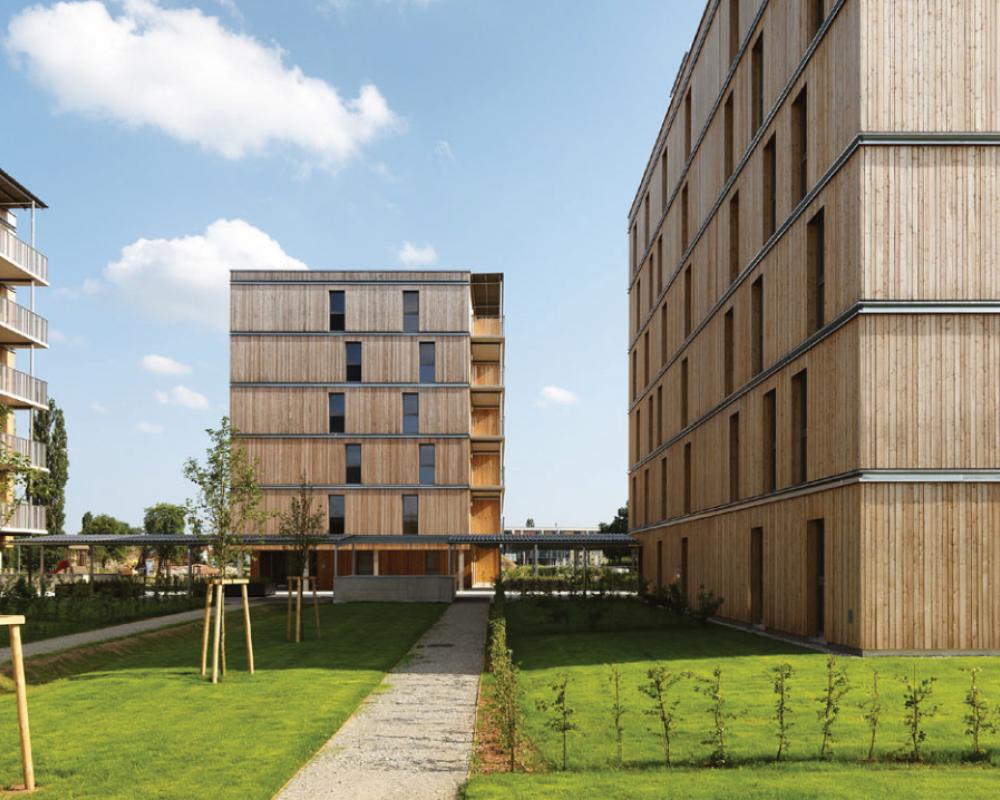
Project: POCI-01-0247-FEDER-017867
Project title: OptimizedWood - Optimização de recursos florestais na construção
Approved investment amount: 458 345,30€
Total Financed: 328 789,94€
Location: Monte Redondo, Leiria
The project
The recent emergence of a new construction system based on solid wood panels, Cross Laminated Timber (CLT), has allowed a new approach in the design and construction of wooden buildings. With this system it is possible to build buildings up to heights previously unthinkable or legally prohibited for buildings with wooden structure, and at the same time offer enormous benefits in terms of thermal, acoustic and seismic comfort.
However, this new construction system in solid wood panels, along with all the benefits it presents, also has some drawbacks, among which the enormous volume of wood required for the elaboration of this type of panels stands out. In order to address this problem, Pedrosa & Irmãos Lda, in partnership with R&D institutions (Universidade de Coimbra (UC), Instituto Politécnico de Leiria (IPL) and Centro de Inovação e Competências da Floresta (SerQ), launched the OptimizedWood project for the development and validation, in an industrial environment, of an innovative hybrid panel.
The product developed is innovative from several perspectives, namely: optimization of structural and non-structural performances of the panel, improvement of electromagnetic shielding and more rational use of raw materials.
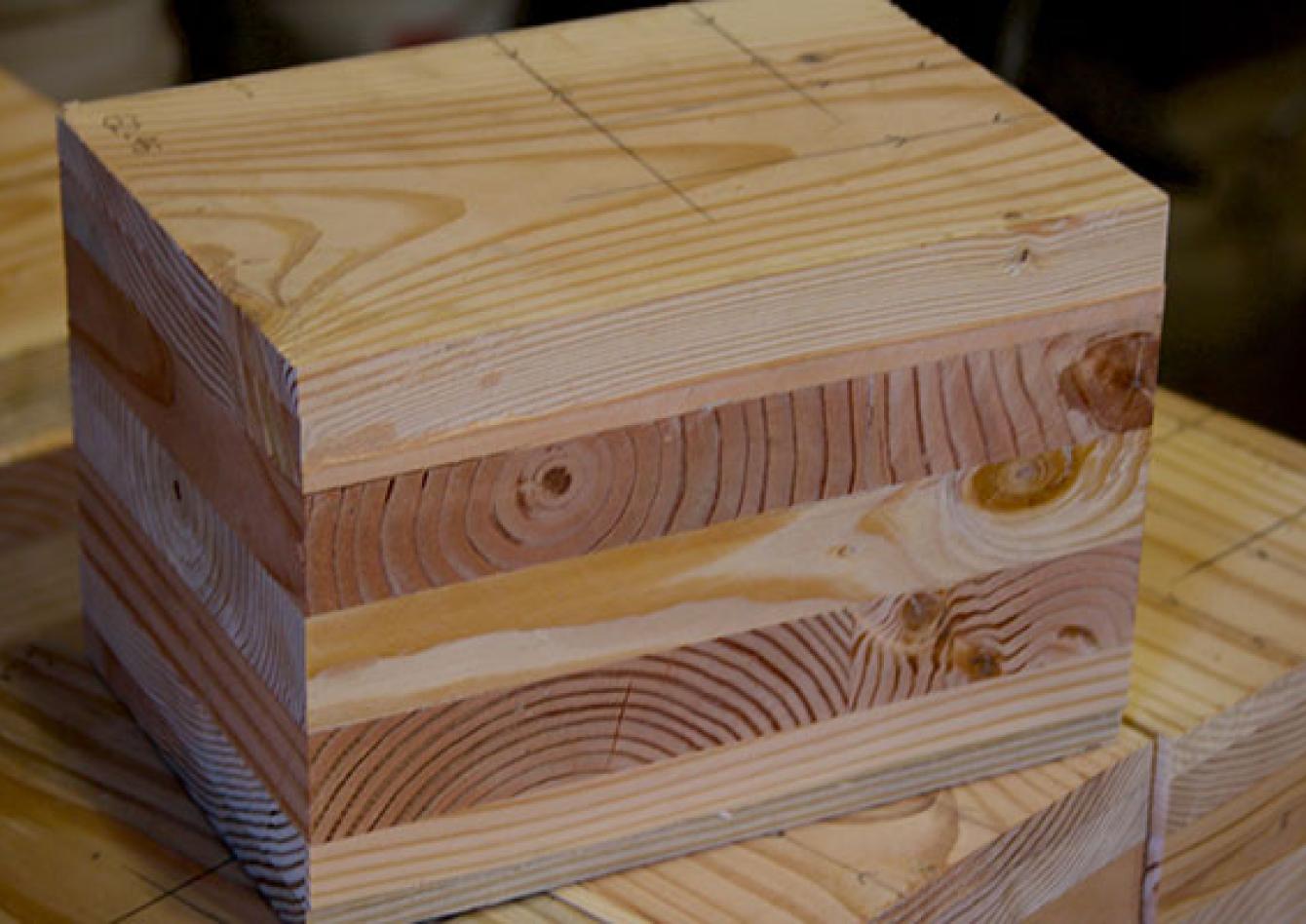
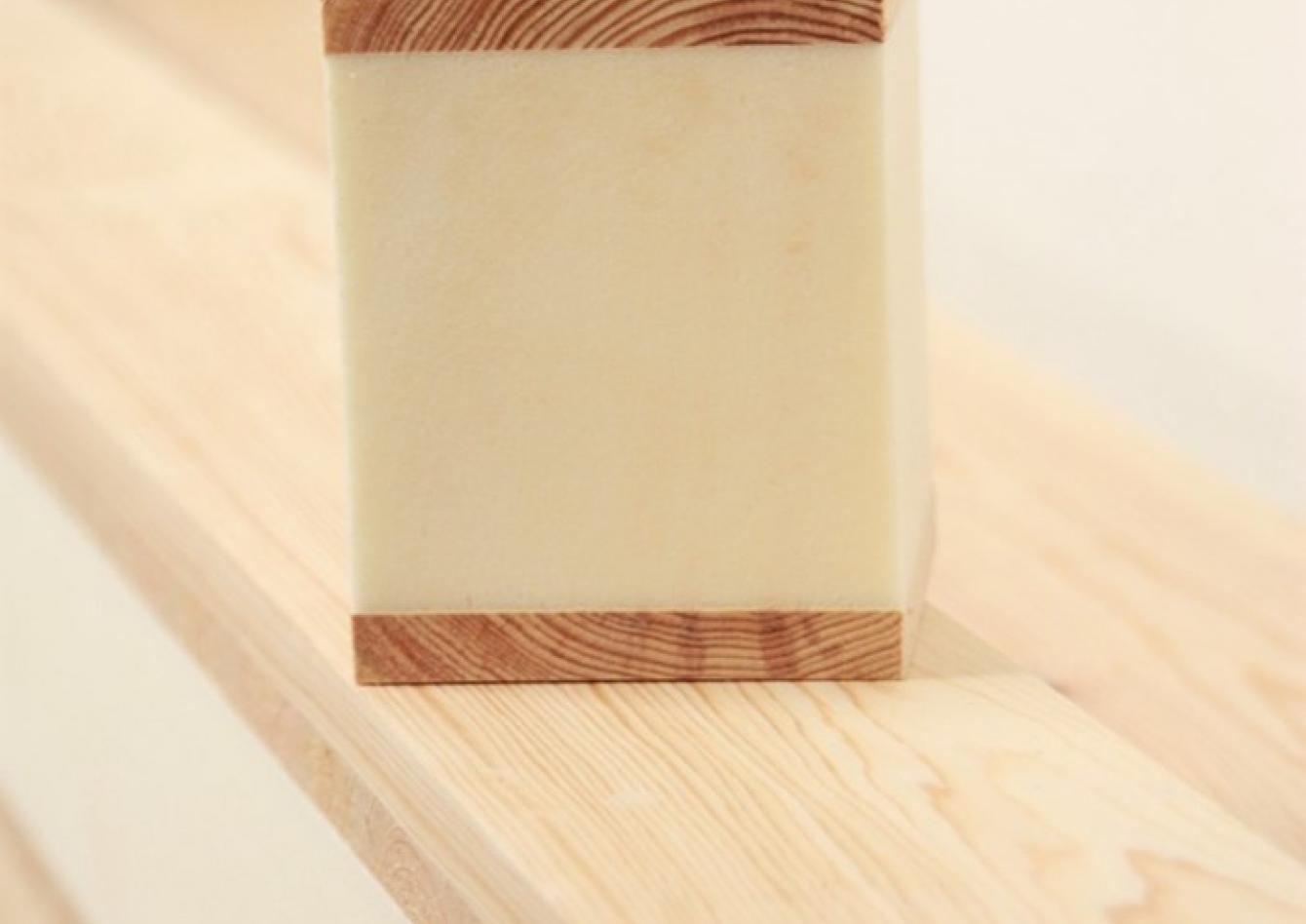
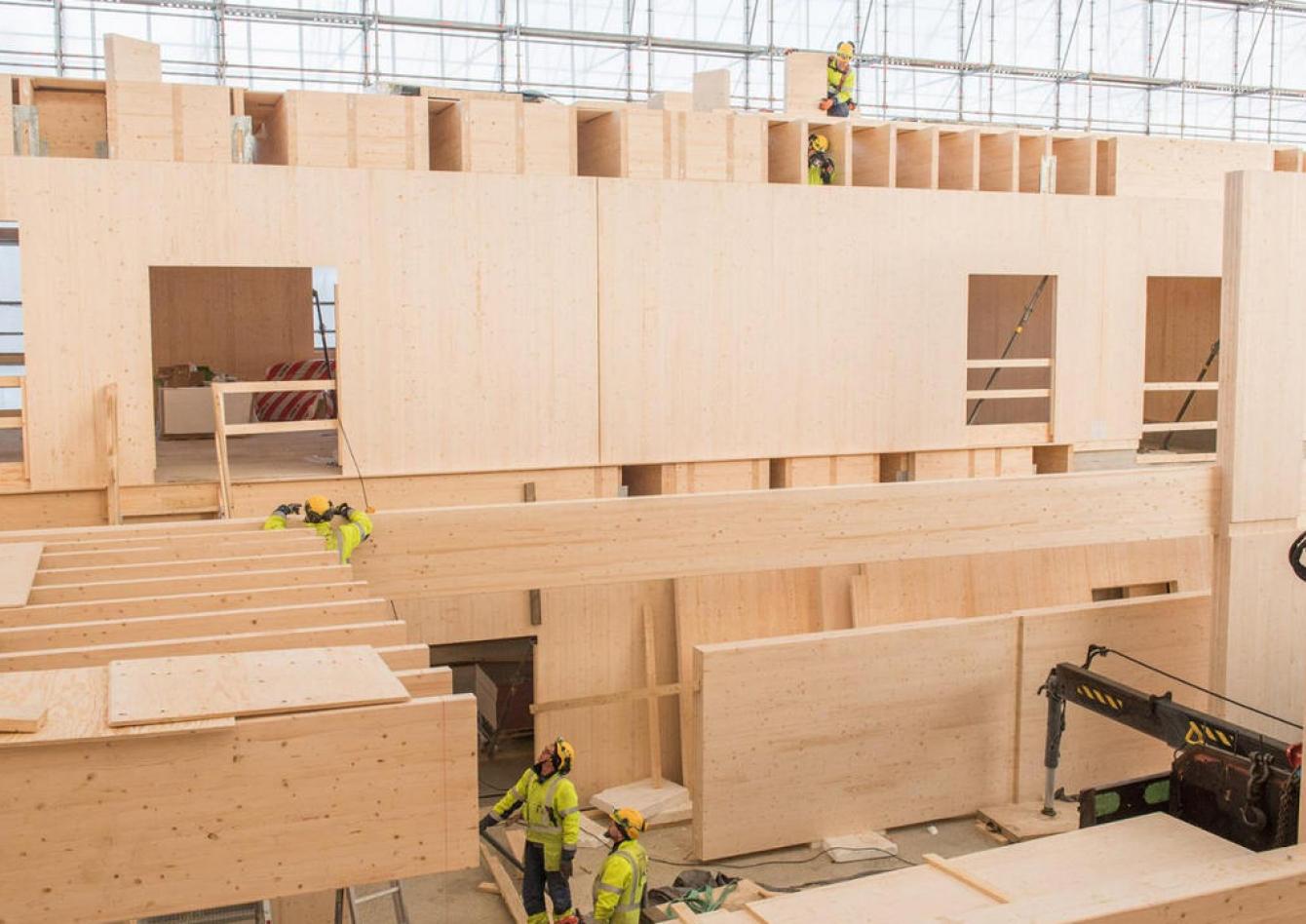
 Optimizedwood
Optimizedwood
Panel development
The developed panels consist of a set of five elementary layers linked together in a composite manner. More specifically, a central unit in insulating material and four in wood (two on each side of the insulating material and arranged orthogonally to each other).
For the definition of the materials, in order to guarantee the best performance of the panel, several tests were carried out with small test pieces, namely delamination tests and cutting tests to evaluate the performance of the wood / wood and wood / insulation adhesions. From this study, the use of polyurethane glues, maritime pine wood and polyurethane insulation was defined. At the end of this phase, samples of 3.00 m in length and 0.75 m in width were manufactured to validate their performance.
Thermal Performance
The determination of thermal resistance and acoustic insulation were carried out in two types of hybrid panels: one with 10 mm thick wood layers and the other with 35 mm; and both types with 30 mm thick polyurethane, making therefore 70 mm and 170 mm, respectively.
The thermal resistance was determined according to the experimental test configuration defined in ASTM C1155 (ASTM, 1995), presenting the average values obtained in the following table:

There was some variability in thermal resistance with values ranging from 1,530 to 1,640 m2.'C on the 70mm panel and from 2,045 to 2,318 m2. * C / W on the 170mm panel, expected values considering the variability of the wood itself as material of organic origin.
Acoustic Performance
In the evaluation of acoustic insulation to aerial sounds and percussion, the ISO 10140 standards were followed for a test adapted to a reduced scale.
The isolation and transmission curves for both types of sources are shown in the graph below. For better classification of the values, CLT of equal thickness and other common solutions, such as reinforced concrete to the metallic sandwich panel, were also tested.
It is concluded that the insulation / transmission is marked out between the heaviest solutions (e.g. reinforced concrete) and the lightest ones (e.g. traditional pavement)
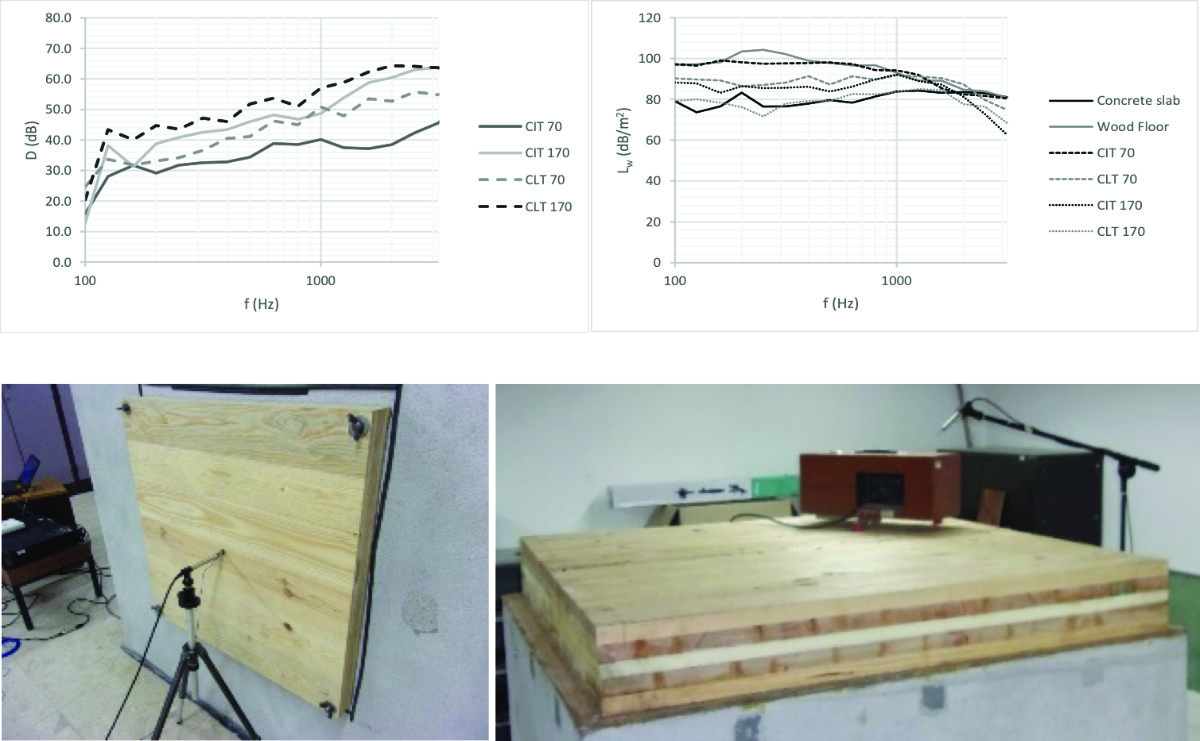
Mechanical performance
The panels were subjected to four-point bending tests, depending on their thickness, according to the guidelines of the ASTM 0393 and EN408 standards for determining the stiffness and breaking load (Fmax).
The ruptures occurred mainly, as predicted, due to shear in the insulation layer. The average values obtained from the breaking loads are shown in the table below.
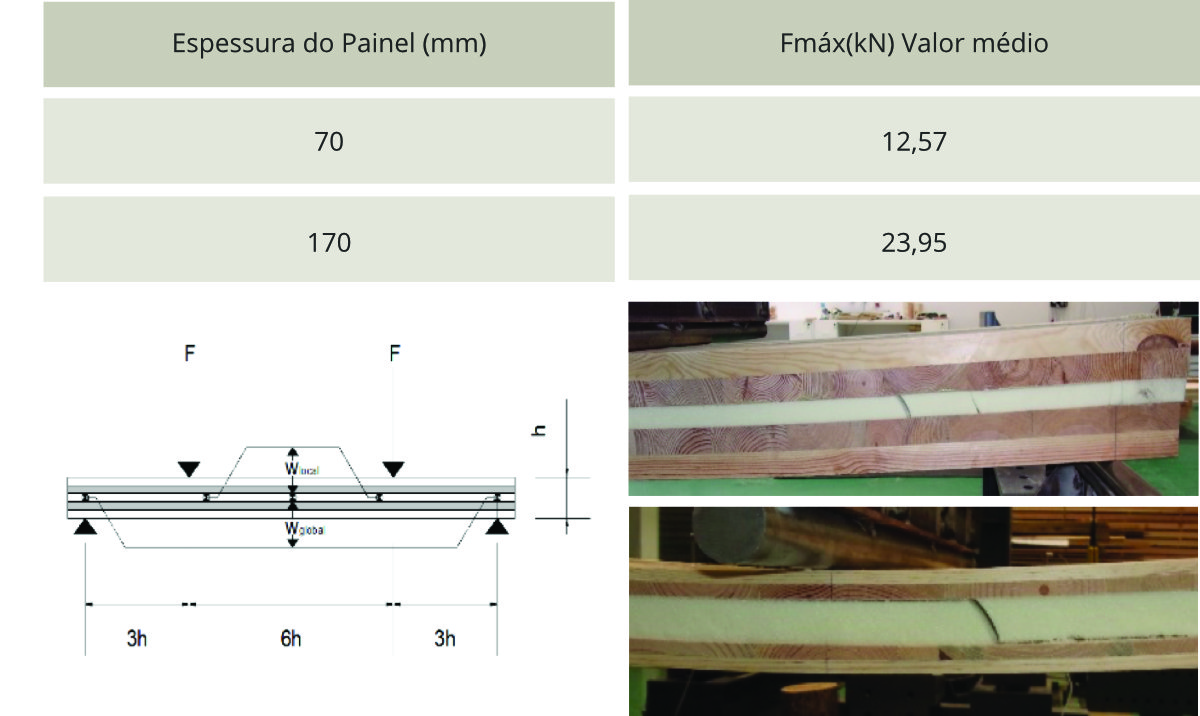
Electromagnetic performance
The evaluation of electromagnetic shielding in an anechoic chamber was carried out on small hybrid panels with a thickness of 70mm and 170mm, all with 700x700mm, and with several combinations of layers of acrylic paint and carbon powder.
The best results were obtained with the coating consisting of two layers of acrylic paint enriched with 30% carbon powder (curve corresponding to test 5 in the graph below).
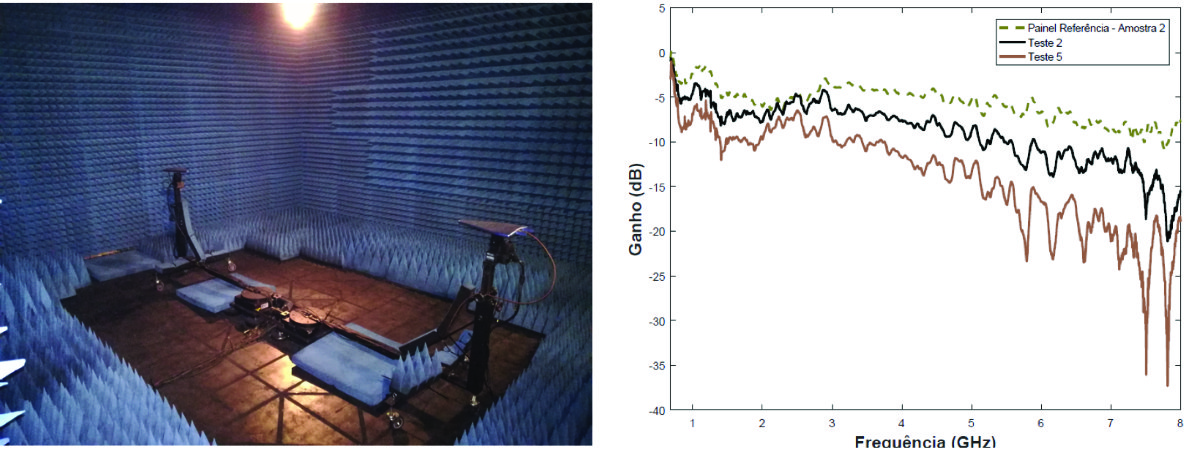
Video
Promotores




Cofinanciado por


